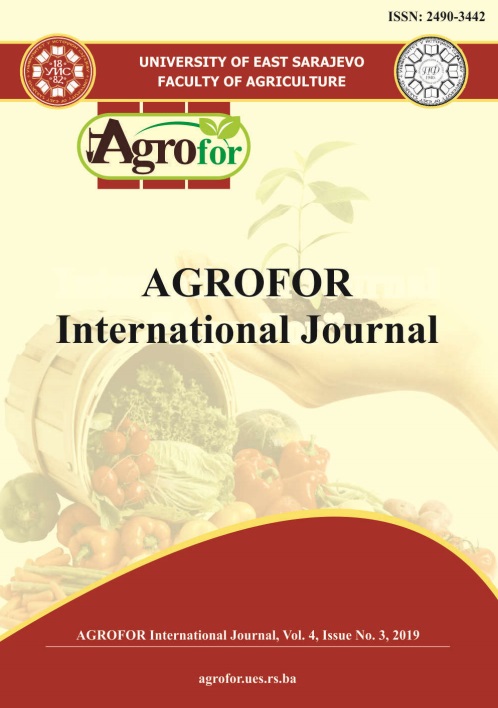EFFECT OF FOLIAR APPLICATION OF SELENIUM ON ITS UPTAKE AND YIELDS IN BASILS
DOI:
https://doi.org/10.7251/AGRENG1903111MAbstract
Basil is one of the most used spices in Slovakia. Selenium is an essential element for normal growth and development of the organism and because Slovak soils are poor in this element, the various ways of this antioxidant increasing in the food chain has being sought. The aim of the work was to evaluate influence of selenium biofortification on selenium content of Ocimum basilicum - variety ´Dark Green´, which was, in conditions of the Slovakia, well known and wide spread grown, as well as on the opal basils (´Purple Ruffles´ and ´Red Rubin´) and on Ocimum tenuiflorum – Tulsi. The influence of fortification on the yields of basils was also tested. The selenium content and the yields of selected basils were compared in dependence on the selenium fertilization, two terms of harvest and morphological variability. Small-scale field experiment was carried out at the Department of Vegetable Production, Slovak University of Agriculture in Nitra, 2016. Selenium was applied foliar at a dose 50 g Se / ha in the form of sodium selenate. In two harvests the values of selenium built in plants and the economically interesting quantitative data – the yields per ha were evaluated. Statistical methods were used for statistical evaluation by the help of Statgraphics Centurion XVII (StatPoint Inc. USA), with multifactor analysis of variance (ANOVA) and LSD test. Foliar application of selenium had a positive effect of selenium content in case of all tested basils. The yields were also positively affected where values of fresh mass in selenised variants ranged from 1.43 (´Purple Ruffles´) to 13.71 t/ha (Tulsi).

